For his live lecture world tour "Horizons", professor Brian Cox and director Nic Stacey asked me to come up with and produce a couple of visuals for the end of the 5-minute video sequence that opens the show.
The sequence is a stunning journey through the 13,8 billion year history of the universe up until present days, played to the finale of Jean Sibelius’ fifth symphony. At the very end of the sequence Brian and Nic wanted to show a few short glimpses into a possible future of humanity, of where we could go and what could become.
It was those visions of the future that I was asked to create.
In the live show, immense LED screens are used to display the visuals on stage, but here I present them in half of their full resolution - which is more than sufficient for most home screens and computer monitors. If you want to see them in their full resolution, I’d recommend trying to go and see the show.
For the production of these visuals, I took help from my fellow CG artist Andreas Wicklund and painter/photographer Greg Martin.
O'Neill Cylinder Interior
Just before I started working on this project, I had made the opening sequence for a documentary feature about the physicist Gerard K. O’Neill. For that sequence I made a shot depicting one of O’Neill’s more famous ideas; an O’Neill cylinder, which is a space habitat in the form of a giant cylindrical structure, rotating along its long axis to generate artificial gravity along the inside “walls”.
I didn’t spend very much time on the interior in that sequence and was curious to explore that kind of environment further, so I suggested it as an idea to Brian and Nic and they were both happy to include it here.
Whether they ever will become a reality or not, I find O’Neill cylinders and similar concepts to be massively fascinating environments and I had a great time building this shot.

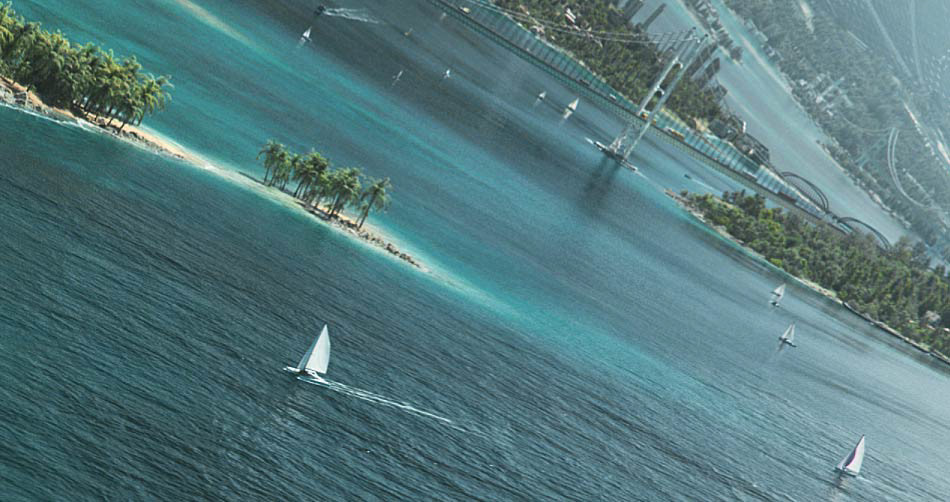
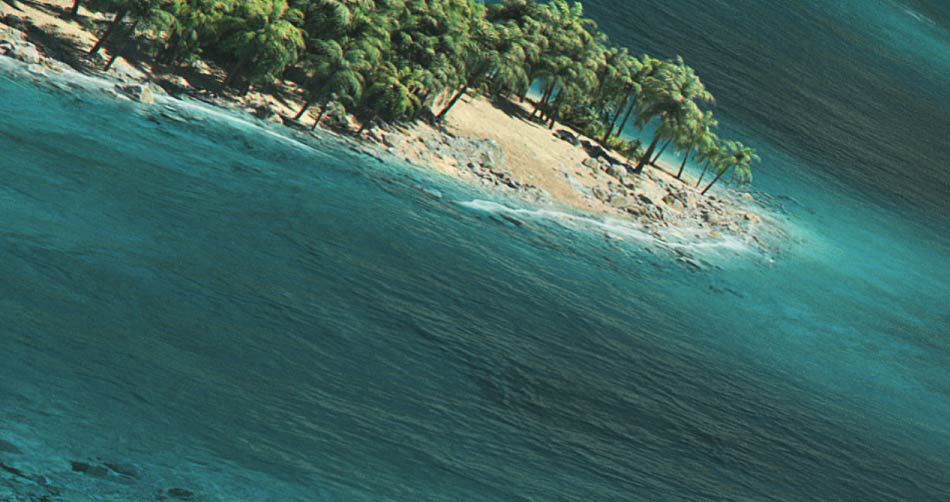
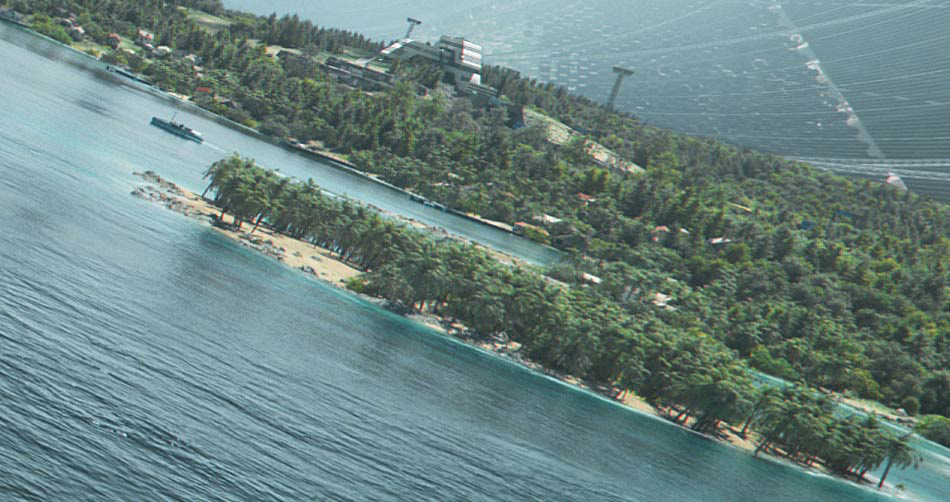
Alien Meadow
This, I guess, is the most speculative and fantastical scene in this series of shots - and serves as the ending of the sequence I made. It does not depict any known place, object or phenomenon and is meant to serve as a view from somewhere very far away in both time and space.
An alien world. Someone is there. It could be us. It could be far descendants of us. Or something else entirely.
I wanted to show familiar signs of both primitive and intelligent life - in the forms of vegetation and the outlines of buildings and technological structures - and mix that with unfamiliar colors for the plants and the sky.
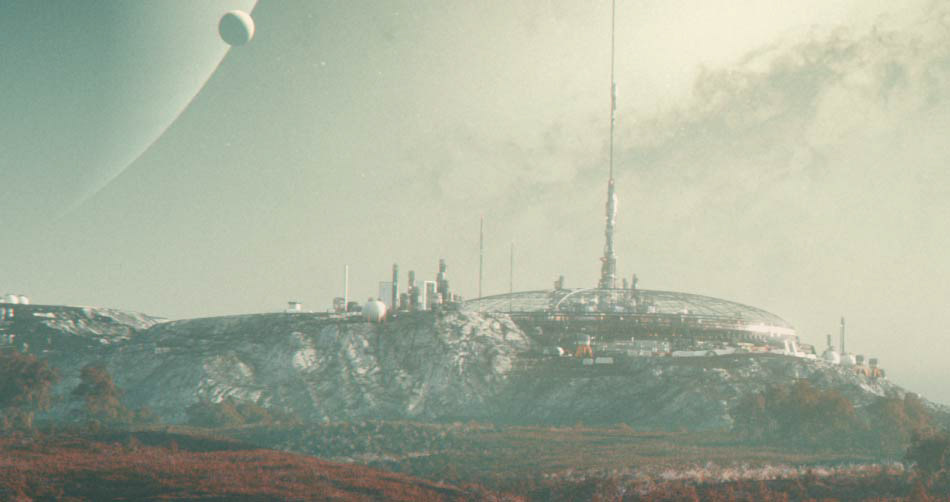
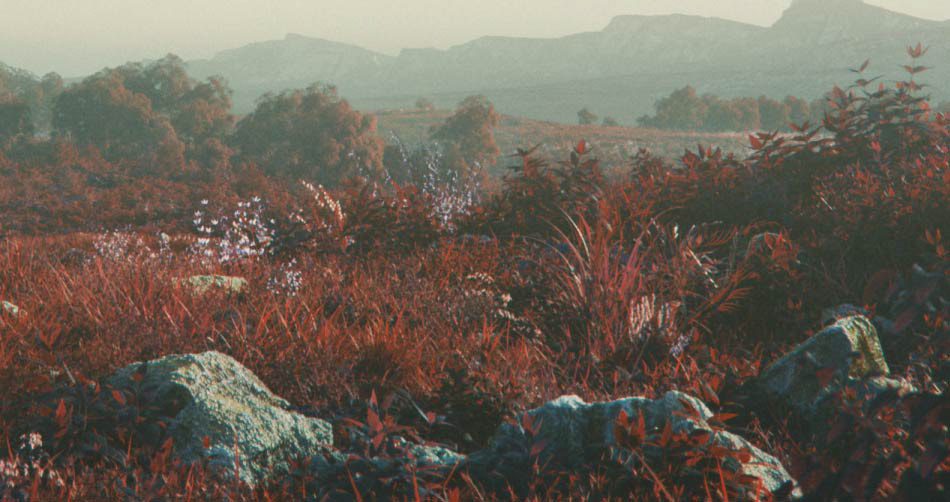
Arrival at Alpha Centauri
In the original “Cosmos” TV series, the astrophysicist Carl Sagan summed the prospects for our future as simple as this: “The sky calls to us. If we do not destroy ourselves, we will one day venture to the stars”. This shot depicts our first arrival at a star system other than our own, our first step into becoming an interstellar civilization.
The Alpha Centauri system is the closest system to ours at about 4.37 light- years from the sun. The system is a triple star system, consisting of two sun like stars and one smaller red dwarf star. There are known planets in the habitable zones of two of the stars in the system.
Viewed from Earth, to the naked eye, the system only appears as one star, but upon arrival, it may appear something like this.
The shot was set up, rendered and composited by Andreas Wicklund.
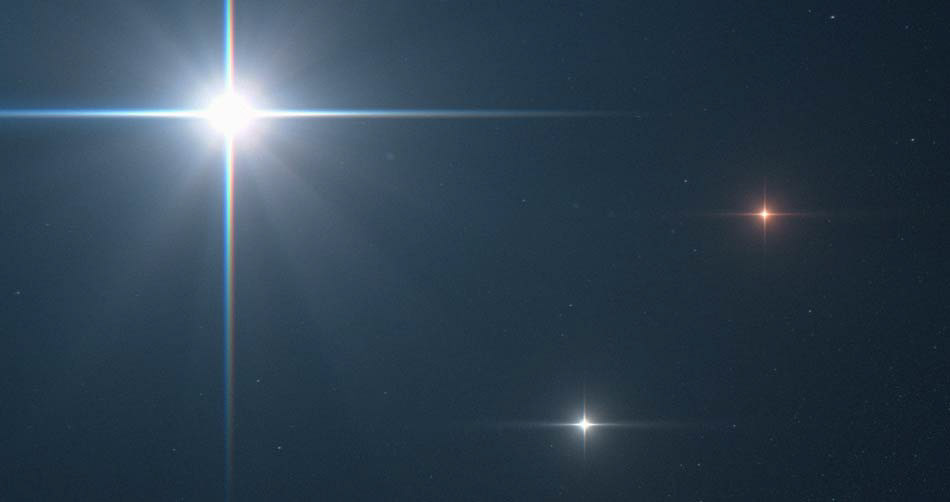
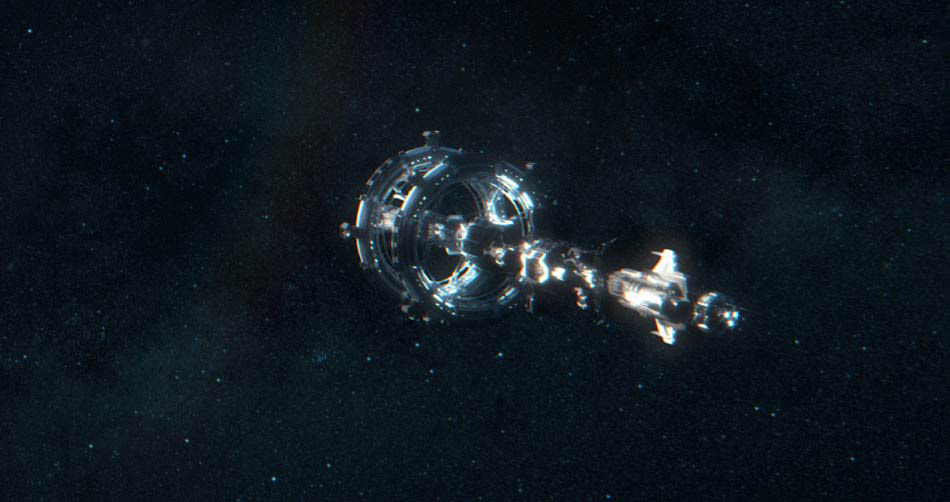
Dyson Swarm Around Black Hole
In the 1960´s, the physicist and mathematician Freeman Dyson popularized a conceptual idea of harvesting the maximum amount of energy emission from a star by building a giant structure encompassing the star entirely. This concept became known as a “Dyson Sphere” and is regarded as a probable - perhaps even essential - step in the technological development of a civilization for reaching an interstellar presence.
There are several variations to the Dyson Sphere concept, one of them known as a “Dyson Swarm”. This is a less dense structure, consisting of a large number of independent pieces in orbit, rather than an all- encompassing sphere.
We thought it would be cool to visualize something like this, and in order to give a hint of an incredibly advanced civilization to do it around a black hole instead of a star.
The shot was set up, rendered and composited by Andreas Wicklund.
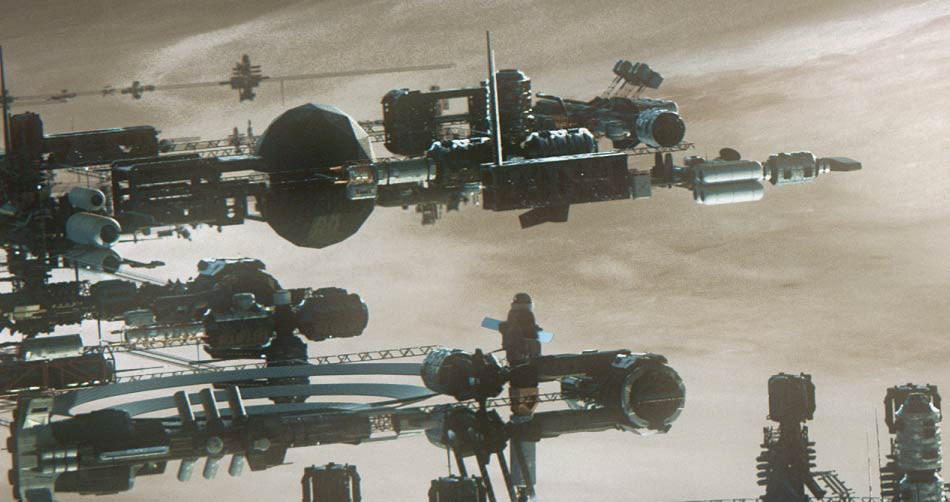

Ringshine Wide - Remake
As some may notice, this shot is a remake of a shot from my previous short film “Wanderers”, an astronaut looking out over the clouds of Saturn at night, lit by sunlight reflected off the magnificent swaths of the rings in the sky - the ringshine.
Brian and Nic first asked if they could use the original shot, but as there was no way possible to scale that up to the required resolution we decided to remake it.
This gave me a chance to update the Saturnian cloudscape, which I was never fully happy with in the original shot. While the clouds did look nice enough, they didn’t have that long smeary curved shapes I’d expect on a gas giant.
I got help from the painter and photographer Greg Martin. He had worked with me before on my film about Cassini’s Grand Finale and before that done some fantastic paintings of jovian cloudscapes. Greg created a gorgeous matte painting which I could use as a new background for the shot.

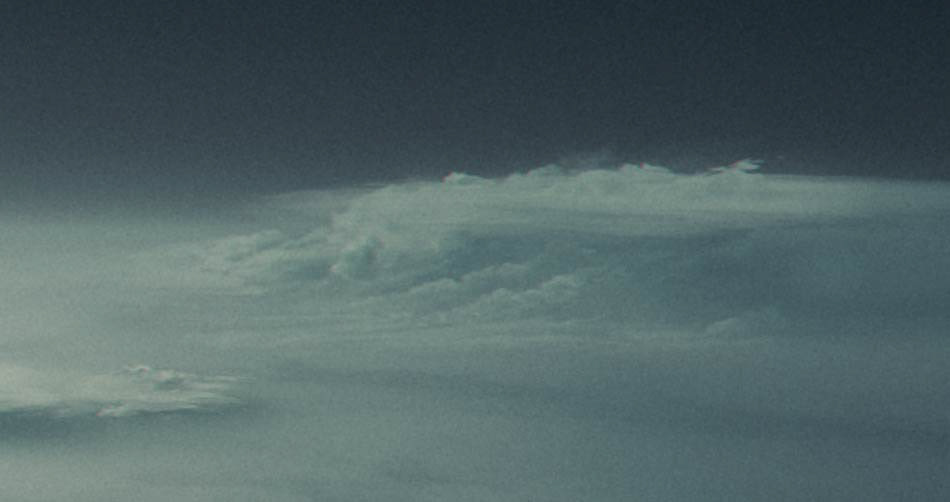
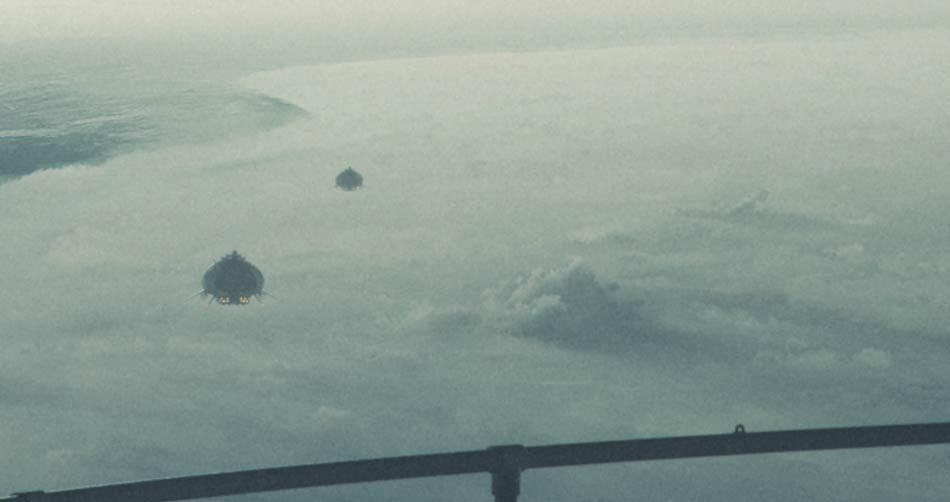

Ringshine Smile - Remake
Just as with the shot above, this too is a remake from a shot from my short film “Wanderers”, showing the face of the astronaut from that previous shot, with Saturns rings reflected in her visor.
Brian and Nic were keen to use this emerging smile behind the mask - which is by the way performed (excellently!) by my wife - and luckily I was able to scale the original footage up to use in this new enormous frame.
I also took the chance to add a tube to the mask. This is a small detail, but it always bothered me that I didn’t do this originally, as the prop we used is quite recognizable and there was no obvious way of how she was supplied with breathable air.